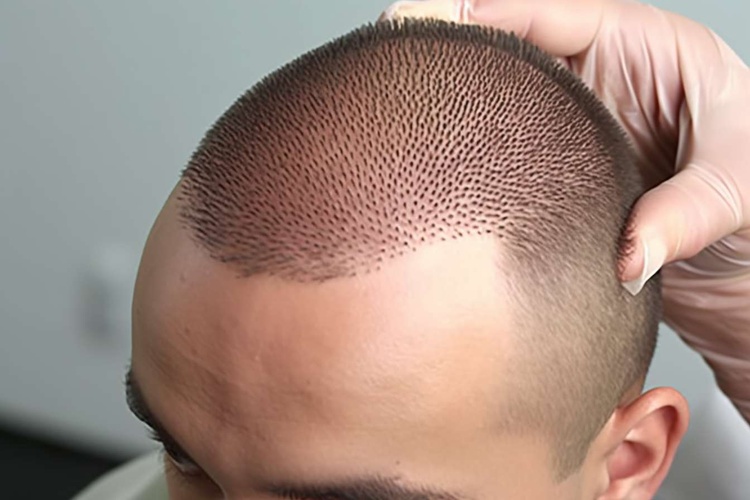Hair Transplantation: A Comprehensive Guide to Restoring Your Natural Look
Hair loss can be a distressing experience for many individuals, affecting self-esteem and confidence. Fortunately, advancements in medical technology have made hair transplantation an effective solution for those seeking to restore their natural appearance. This article delves into the world of hair transplantation, exploring its various aspects and benefits.

There are two primary techniques used in hair transplantation: Follicular Unit Transplantation (FUT) and Follicular Unit Extraction (FUE). FUT involves removing a strip of scalp from the donor area and dissecting it into individual follicular units for transplantation. FUE, on the other hand, extracts individual follicular units directly from the donor area using a specialized punch tool. Both methods aim to achieve natural-looking results by strategically placing the transplanted hair to mimic the patient’s original hair growth pattern.
Who is a suitable candidate for hair restoration?
Hair restoration through transplantation is not a one-size-fits-all solution. Ideal candidates for this procedure typically include:
-
Individuals experiencing male or female pattern baldness
-
Those with stable hair loss that has not progressed rapidly
-
People with sufficient donor hair to cover the thinning areas
-
Patients in good overall health without conditions that may impair healing
-
Individuals with realistic expectations about the outcome of the procedure
It’s important to note that hair transplantation may not be suitable for everyone. Factors such as the extent of hair loss, the quality of donor hair, and underlying medical conditions can influence candidacy. A consultation with a qualified hair restoration specialist is essential to determine if this cosmetic procedure is right for you.
What are the benefits of hair transplantation as an aesthetic enhancement?
Hair transplantation offers numerous benefits as an aesthetic enhancement procedure:
-
Natural-looking results: Modern techniques allow for seamless integration of transplanted hair with existing hair, creating a natural appearance.
-
Permanent solution: Unlike temporary hair loss treatments, transplanted hair is typically permanent and continues to grow naturally.
-
Improved self-confidence: Restoring hair density can significantly boost self-esteem and overall confidence.
-
Versatile styling options: With restored hair, patients can enjoy a wider range of hairstyling possibilities.
-
Minimal scarring: Advanced techniques, especially FUE, result in minimal visible scarring.
-
Customizable treatment: The procedure can be tailored to address specific areas of concern, from receding hairlines to crown thinning.
How does the hair transplant process unfold?
The hair transplant process typically involves several stages:
-
Consultation: A thorough evaluation of the patient’s hair loss pattern, donor hair availability, and overall health is conducted.
-
Planning: The surgeon designs a customized treatment plan, outlining the number of grafts needed and the proposed hairline design.
-
Preparation: The donor and recipient areas are prepared, which may involve trimming or shaving the hair in certain regions.
-
Extraction: Hair follicles are harvested from the donor area using either the FUT or FUE technique.
-
Implantation: The extracted follicles are carefully placed into tiny incisions made in the recipient area, following the predetermined design.
-
Recovery: Post-procedure care instructions are provided, and the patient begins the healing process.
-
Follow-up: Regular check-ups are scheduled to monitor progress and address any concerns.
Can hair transplants be used for eyebrow restoration?
Yes, hair transplantation techniques can be effectively applied to eyebrow restoration. Eyebrow transplants have gained popularity as a solution for those with thin or sparse eyebrows due to overplucking, scarring, or genetic factors. The procedure follows similar principles to scalp hair transplantation but requires specialized skill to achieve natural-looking results.
During an eyebrow transplant, hair follicles are typically harvested from the back of the scalp and carefully implanted into the eyebrow area. The surgeon must pay close attention to the direction and angle of hair growth to mimic the natural eyebrow pattern. This meticulous process can create fuller, more defined eyebrows that enhance facial features and restore balance to the face.
What are the costs and considerations for hair transplantation?
Hair transplantation costs can vary significantly based on several factors, including the extent of hair loss, the chosen technique, the surgeon’s expertise, and geographic location. Here’s a general overview of pricing and considerations:
| Procedure Type | Average Cost Range | Key Considerations |
|---|---|---|
| FUT (Strip Method) | $4,000 - $15,000 | Larger number of grafts possible in one session, linear scar |
| FUE | $4,000 - $20,000 | No linear scar, longer procedure time, potentially higher cost per graft |
| Eyebrow Transplant | $3,000 - $8,000 | Specialized technique, fewer grafts needed |
Prices, rates, or cost estimates mentioned in this article are based on the latest available information but may change over time. Independent research is advised before making financial decisions.
It’s important to note that while cost is a significant factor, it shouldn’t be the sole determinant when choosing a hair transplant provider. The surgeon’s experience, clinic reputation, and the quality of results should also be carefully considered. Many clinics offer financing options to help manage the cost of the procedure.
Additionally, patients should factor in potential expenses for post-procedure care, including medications and follow-up appointments. Some clinics may include these in their overall package, while others may charge separately.
Hair transplantation is a significant investment in one’s appearance and self-confidence. By understanding the process, benefits, and considerations involved, individuals can make informed decisions about pursuing this aesthetic enhancement procedure. As with any cosmetic treatment, consulting with a qualified professional is crucial to determine the most appropriate approach for your unique situation.
This article is for informational purposes only and should not be considered medical advice. Please consult a qualified healthcare professional for personalized guidance and treatment.






